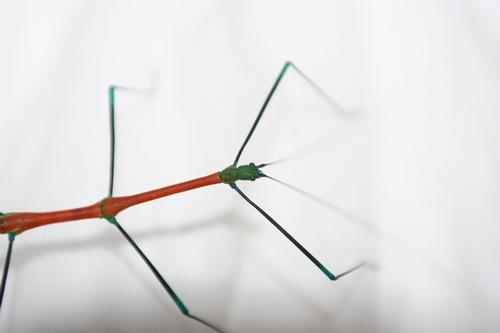Carausius Morosus (Indian) Stick Insect
Origin: India.
Environment: Rainforest.
Adult Size: 5 - 8cm.
Food Type: Privet, Ivy, Hawthorn, Bramble, Rose, Oak & Hazel.
PSG (Phasmid Study Group): 001.
Information: The Indian stick insect is very underrated, yet they are extremely popular amongst phasmid keepers both experienced and new. They are easy to handle, vary in colour (greens and browns) and are completely risk-free, as they will not and can not bite you.
Housing: This species is very easy to care for. They require a simple mesh or glass enclosure of at least 30cm in height (to allow for successful moulting).
Temperature: Indian sticks can be kept quite satisfactorily at room temperature of 20-24 C (68 -75 F).
Humidity: Provide a moderate level of humidity (60-70%) by spraying the enclosure once to twice weekly with a manual water sprayer. You will find stick insects drink moisture from the food plant leaves and benefit from the increased humidity when moulting their skin.
Breeding: Indian stick insects will reproduce in captivity even in the absence of a male, this is called parthenogenetic reproduction. From the approximate age of 6 months (when they develop red armpits - as seen in the picture), Indian stick insects will begin to produce eggs (known as ova) daily. It is important to control overpopulation (only keep the amount of eggs you can care for), the rest can be passed on to friends and family or destroyed. It is illegal to release these creatures in the UK.
All our insects, when purchased will arrive with a care guide explaining all the tips and tricks to caring for your insect.










